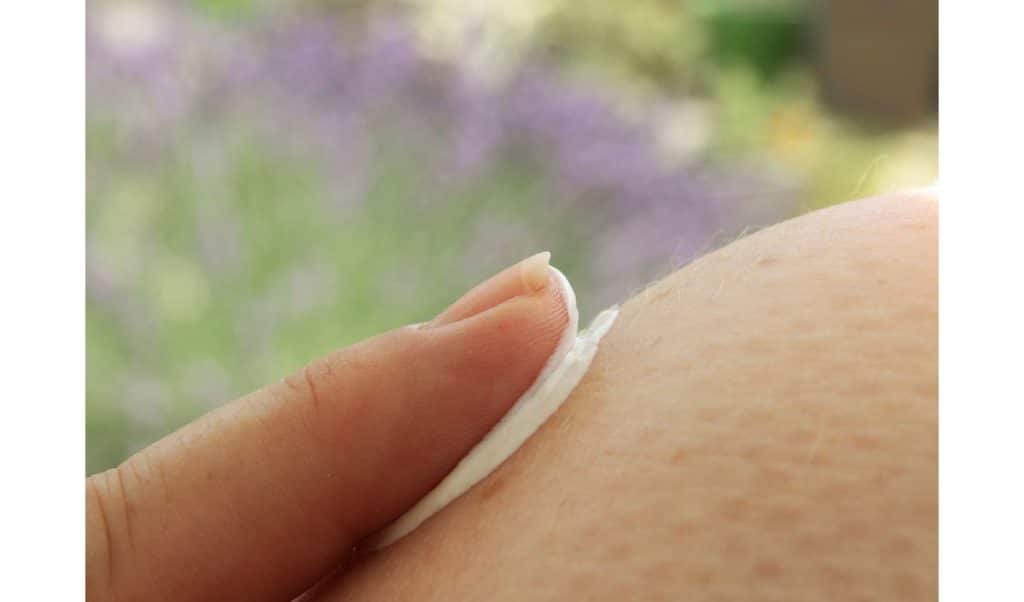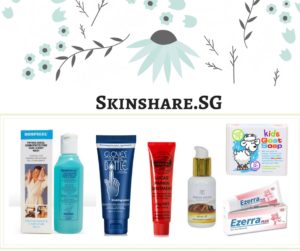Topical steroids ointment have been the commonly prescribed medication for my eczema and dermatitis condition for many years.
While it has been proven to be effective in managing mild to chronic skin inflammation symptoms, however, if used incorrectly, can result in negative effects on your skin.
What are the different types of Topical Steroids?
Topical steroids or medically known as topical corticosteroids should only be prescribed and applied under the supervision of a doctor or dermatologist. From the medical consultation and severity of the rash, the doctor will prescribe the appropriate potency of the topical steroid ointment. There are many pharma companies incorporating the chemical component in ointment or cream form, with different potency – low to high potency, for different parts of the body & age appropriate. With reference to the World Health Organization classification (as of 1997), below is the list of the ultra-high and high potency steroid ointments:
Ultra High Potency
| Class I | Clobetasol propionate Cream, 0.05% |
| Class I | Diflorasone diacetate Ointment, 0.05% |
High Potency
| Class II | Amcinonide Ointment, 0.1% |
| Class II | Betamethasone dipropionate Ointment, 0.05% |
| Class II | Desoximetasone Cream or ointment, 0.025% |
| Class II | Fluocinonide Cream, ointment or gel, 0.05% |
| Class II | Halcinonide Cream, 0.1% |
| Class III | Betamethasone dipropionate Cream, 0.05% |
| Class III | Betamethasone valerate Ointment, 0.1% |
| Class III | Diflorasone diacetate Cream, 0.05% |
| Class III | Triamcinolone acetonide Ointment, 0.1% |
For the complete list, you may visit the WHO website. Do also take note that the percentage (%) indicated by itself does not solely reflect the strength of the medication. A complete combination of the chemical name, plus the formulation (ointment/cream/lotion) and the concentration will determine the potency. In general, ointments are more potent than creams or lotions.
What are the side effects of prolonged/overuse of steroid application?
Misconception of how to use this medication & over the counter sales in countries where it is permitted has led to more reported cases of side-effects from this medication. The quick fix and fast relief that this ointment provides to severe skin inflammation and condition has also led to consumer to reach out for topical corticosteroids more often. This has resulted in prolong usage, and commonly termed as ‘steroid cream addiction’.
According to DermNetNZ, most reports of side effects is due to prolonged use of unnecessarily potent topical steroids for inappropriate skin conditions. Some common observations are :
- Skin thinning (atrophy)
- Stretch marks in armpits or groin
- Easy bruising and tearing of the skin.
- Enlarged blood vessels
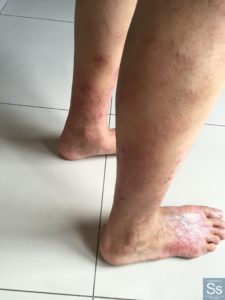
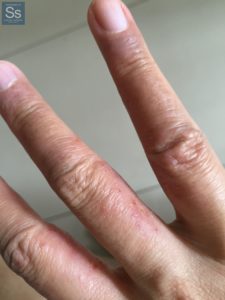
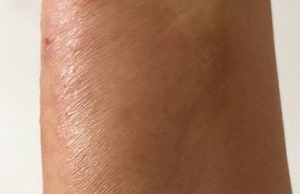
I experienced all the symptoms above, and documented my experience in this article.
In Singapore, topical steroid medication is prescribed by a doctor or dermatologist(skin specialist) and cannot be bought over the counter at the pharmacy. The correct steroid formulation will be prescribed based on your skin condition. Other than potency, you may be prescribed topical steroid with antibacterial / antifungal / other additives.
If you are prescribed with a topical steroid medication, you will need to adhere to the recommended usage frequency. According to National Eczema Organization, a thin layer that covers the inflamed area is sufficient. “One fingertip unit” should be enough to cover an area of skin the size of two flat adult palms of the hand (including fingers). Do also be mindful on how to taper or stop the application once the skin condition gets better.
For different part of the skin, the doctor will prescribe different potency of topical steroids that are appropriate. Children who have thinner skin and adult’s face are generally areas which are more sensitive and require proper prescription from a dermatologist or skin specialist.
Concurrent Skincare Regime for Eczema
Topical corticosteroids, or topical steroids, have been used in treating eczema and atopic dermatitis for more than 50 years and remain among the most effective and widely used in dermatology. However, in order to prevent overuse and side effects of steroids on your skin, natural remedies and concurrent skincare regime is important. In long term management of eczema, you will need to have a holistic approach to prevent flare-up. Here are some recommended suggestions for eczema skincare regime :
- Find your trigger(external irritant, stress, food intolerance, skin allergy) and avoid the allergen.
- Maintain correct skincare regime to prevent itch-scratch cycle. One common mistake is that eczema sufferers tend to apply moisturizer directly on oozing wound. The correct regime is to first using a mild antiseptic wash on wound first rather applying lotion directly on it.
- Do not use harsh antiseptics such as Dettol, it’s meant to clean the floor and occasional diluted to use on cuts and wounds. It will sting and dry eczema skin further, not suitable for constant use to treat eczema.
- Apply the correct type of emollient,depending on the stage of your skin dryness. Lotion is for mildly dry skin, cream-based is for very dry, inflammed skin and ointment is for extremely dry, cracked skin.
- Prevention is better than cure : If you suspect that your trigger is external chemical irritant, change to a mild, hypoallergenic or natural/organic wash.
- Avoid applying topical steroids directly on big area of wounded eczema*. You should treat with antibiotic ointment or pharmaceutical grade pure emu oil as a protective layer first.
- If you suspect that dust or dust mites irritates your skin, protect with a shielding lotion rather than a conventional moisturizer.
*[Reference : https://www.ncbi.nlm.nih.gov/pmc/articles/PMC4132506/]

